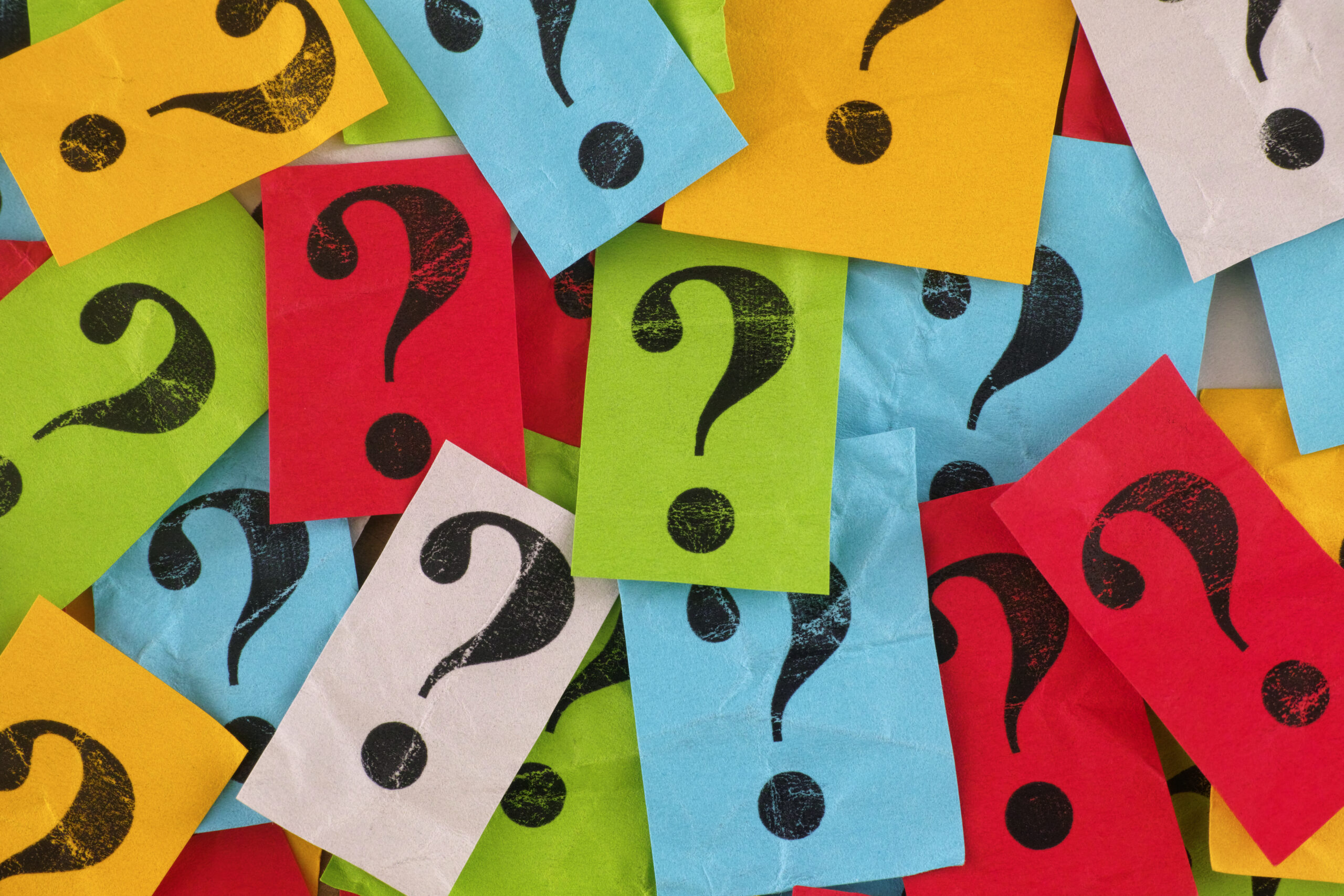Note: It’s Allyson’s fault these haven’t been going out. She apologizes profusely.
Dec 6-8, 2025:
THE GREAT AMERICAN REVIVAL: Trump’s Second-Term Revolution Restoring American Greatness
https://gellerreport.com/2025/12/the-great-american-revival-trumps-second-term-revolution-restoring-american-greatness.html/
‘Enemy of Europe’:LiberalglobalistsattackTrump over recognizing ‘civilizational erasure’ in Europe
https://www.theblaze.com/news/enemy-of-europe-liberals-globalists-attack-trump-over-recognizing-europe-is-set-for-civilizational-erasure
Civil War 2.0 Weather Report: A Color Revolution In Progress?
https://wilderwealthywise.com/civil-war-2-0-weather-report-a-color-revolution-in-progress/
In this issue: Front Matter – Mere Anarchy is Loosed Upon the World– Violence and Censorship Update – Misery Index – Updated Civil War 2.0 Index – “It wasn’t worth it.” – Links
Widespread Obamacare Fraud: Phony SSNs Had a 100% Success Rate for Getting Coverage, Investigation Finds
https://www.westernjournal.com/widespread-obamacare-fraud-phony-ssns-100-success-rate-getting-coverage-investigation-finds/
University of Minnesota faces backlash over project that seeks to cure the ‘Whiteness Pandemic’
https://www.theblaze.com/news/university-of-minnesota-faces-backlash-over-project-that-seeks-to-cure-the-whiteness-pandemic
‘Family socialization into the centuries-old culture of Whiteness — involving colorblindness, passivity, and fragility — perpetrates and perpetuates US racism.’
George Clooney Drops Bombshell: “My Wife Helped Draft The Muslim Brotherhood’s Constitution”
https://gellerreport.com/2025/12/george-clooney-drops-bombshell-my-wife-helped-draft-the-muslim-brotherhoods-constitution.html/
JD Vance Responds as Media Seeks to Stoke Controversy Over His Wife’s Wedding Ring
https://www.westernjournal.com/jd-vance-responds-media-seeks-stoke-controversy-wifes-wedding-ring/
Congress Seeks to Block Trump’s Caribbean Strikes on Narco-Terrorists/
https://americanjournaldaily.com/congress-cartels-boat-strikes/
Trump Unveils Strategy Shifting U.S. Focus to Western Hemisphere, Warns Europe of ‘Civilizational Erasure’
https://istandforfreedom.com/trump-focus-hemisphere-europe/
The new National Security Strategy released Friday unveils what Trump calls his “corollary” to the Monroe Doctrine—a 21st-century assertion that America’s backyard comes first. “In everything we do, we are putting America First,”
Why do you carry high capacity magazines?
https://miguelgg.substack.com/p/why-do-you-carry-high-capacity-magazines
Clowns acting rather poorly.
https://miguelgg.substack.com/p/clowns-acting-rather-poorly
4 – 26 sec videos
Lobbyist of the Maduro Cartel in the USA. – Senator Adam Schiff
https://miguelgg.substack.com/p/lobbyist-of-the-maduro-cartel-in
and
Venezuela’s former intelligence leader Hugo Carvajal has CONFIRMED that Democrat Senator Adam Schiff and Democrat Congressman Eric Swalwell, both of California, are two of the top names on the VENEZUELA LIST of US politicians that are receiving MILLIONS OF DOLLARS IN KICKBACKS AND LAVISH GIFTS from the Maduro regime and Venezuelan drug trafficking
https://x.com/i/status/1997391603900801204
and
Democrats once called out links between drug trafficking and terrorism but then came Trump
https://justthenews.com/government/security/democrats-once-called-out-links-between-drug-trafficking-and-terrorism-trumpsThat was then, this is now: Dems even specifically identified Venezuela, where Trump has focused most of his pressure, as a hub for drug trafficking linked to such terrorist groups.
GOP Senator Moreno Introduces Bill to End Dual Citizenship for Migrants
https://americanjournaldaily.com/gop-senator-migrants
Senate Republicans Confirm 97 Trump Nominees After Democrat Blockade Backfires
https://americanjournaldaily.com/sen-dems-trump/
Dems Thought They Scored a Victory Against Trump’s Agenda – Then Everything Backfired
Illegal Alien Pays the Price After Injuring 4 Police Officers in Gas Station Shootout
https://www.westernjournal.com/illegal-alien-pays-price-injuring-4-police-officers-gas-station-shootout/
Can presidents fire all federal bureaucrats at will? Supreme Court to hear case with major implications
https://www.theblaze.com/news/can-presidents-fire-all-federal-bureaucrats-at-will-supreme-court-to-hear-case-with-major-implications
Jasmine Crockett’s Utterly Bizarre Campaign Kickoff Video Is Nothing but Trump Insulting Her Non-Stop for 45 Seconds
https://www.westernjournal.com/watch-jasmine-crocketts-utterly-bizarre-campaign-kickoff-video-nothing-trump-insulting-non-stop-45-seconds/
video – 00:00:44 – https://twitter.com/i/status/1998140978285150336
and
Chris Cillizza Says Jasmine Crockett’s Bid for the Senate Is ‘Beyond Bad for Democrats Nationally’
https://twitchy.com/brettt/2025/12/08/chris-cillizza-says-jasmine-crocketts-bid-for-the-senate-is-beyond-bad-for-democrats-nationally-n2422613
Entitled Somalian, now a state rep describes how miserable her experience of life in America was
https://www.bizpacreview.com/2025/12/08/entitled-somalian-now-a-state-rep-describes-how-miserable-her-experience-of-life-in-america-was-1608854/
Hey, Guess What the Experts Were Wrong About This Time!
https://pjmedia.com/vodkapundit/2025/12/08/hey-guess-what-the-experts-were-wrong-about-this-time-n4946805
Texas Enacts Women’s Privacy Act, Mandating Biological Sex Bathrooms with $125,000 Daily Penalties
https://americanjournaldaily.com/texas-womens-act-mandating-penalties/
Dec 9, 2025:
Christmas Season Story – Because I’m me
https://thelawdogfiles.substack.com/p/christmas-season-story
The Stages Of A Color Revolution… And Where America Is Right Now
https://www.americanthinker.com/blog/2025/12/the_stages_of_a_color_revolution_and_where_the_u_s_is_right_now.html
(A “color revolution” (sometimes called a “soft coup” or “regime-change operation by non-kinetic means”) is a modern form of orchestrated political upheaval designed to replace an existing government without traditional military invasion or civil war.)
and
America’s “Color Revolution” – Updated 8/15/2023
https://marisol-nostromo.medium.com/americas-color-revolution-343cdf1b1181
Able-bodied 38-year-old man goes viral for response to Trump food stamp restrictions: ‘That’s some bulls**t!’
https://www.theblaze.com/news/snap-welfare-man-viral-trump
Scott is 38 years old, doesn’t have kids or a job, doesn’t go to school, and is not disabled. But he’s upset that his SNAP food benefits are imperiled.
video – 00:02:13 – https://youtu.be/ZDQLnF8qSt4
“AWWWWW! Poor baby has to go to work like the rest of us!!” one commenter said.
Tucker Carlson Embraces Jihad in Doha
https://gellerreport.com/2025/12/tucker-carlson-embraces-terrorism-in-doha.html/
Convicted Muslim Brothers Hired Back, Destroying Federal Systems, U.S. Databases Wiped at Multiple Fed Agencies
https://gellerreport.com/2025/12/from-prison-to-pentagon-previously-convicted-muslim-brothers-hired-back-destroying-federal-systems-u-s-databases-wiped-at-multiple-fed-agencies.html/
the truly terrifying part is this: these jihadis had already been convicted of hacking federal systems once before, served prison time, and were still trusted again with privileged access to government data…used that access to wipe nearly 100 databases, steal IRS and EEOC records, compromise Homeland Security systems,
Obama’s DEA Deputy Chief Indicted for LAUNDERING $12 MILLION For TERROR CARTEL, Plotted to Acquire Explosives, Military-Grade Weapons, and Armed Drones for Cartel Use
https://gellerreport.com/2025/12/obamas-dea-deputy-chief-indicted-for-laundering-12-million-for-terror-cartel-plotted-to-acquire-explosives-military-grade-weapons-and-armed-drones-for-cartel-use.html/
“SHE DOESN’T SERVE AMERICA”: Former Somali Prime Minister Declares Ilhan Omar Serves Somalia Not America
https://gellerreport.com/2025/12/she-doesnt-serve-america-former-somali-prime-minister-declares-ilhan-omar-serves-somali-not-america.html/
Trump announces $12 billion in aid to farmers
https://www.nbcnews.com/business/economy/trump-farmers-aid-package-china-rcna247988
China recently started buying U.S. soybeans again after a trade war halted the purchases in a blow to American farmers.
Fed expected to deliver third straight rate cut this week amid labor concerns
https://www.foxbusiness.com/economy/fed-expected-deliver-third-straight-rate-cut-week-amid-labor-concerns
Cities are pulling back from a surveillance network expanding rapidly beyond their control
https://www.collapselife.com/p/flock-ring-camera-national-surveillance-grid
License plate readers, home security cameras, and outsourced data labeling have created a control grid that was approved piecemeal before anyone realized how it would chillingly coagulate against us.
Community Leader Gives Ilhan Omar UP, Admits She Did INDEED Marry Her Brother in Rush to ‘Get Him Papers’
https://twitchy.com/samj/2025/12/09/new-report-claims-ilhan-omar-did-marry-her-brother-and-theyve-got-receipts-n2422630
Tilting FOR Windmills? Leftist Judge Demands Trump Grant Permits for Green New Scam
https://twitchy.com/grateful-calvin/2025/12/09/tilting-for-windmills-leftist-judge-demands-trump-grant-permits-for-green-new-scam-n2422618
…US District Court Judge Patti Saris, a Bill Clinton appointee, has mandated that President Trump MUST greenlight permits for more windmills.

and
Trump order halting wind energy projects is unlawful, judge rules
https://www.washingtonexaminer.com/policy/3911299/trump-order-halting-offshore-wind-unlawful-judge/
U.S. District Judge Patti Saris ruled Monday afternoon that the president’s Day One executive order suspending all new permits and leases for onshore and offshore wind energy projects was illegal, vacating the order.
embeded video – 00:01:41
The New Nullification
https://patriotpost.us/articles/123367
How Democrat leaders are turning political disagreement into a license for defying lawful authority.
Impeach Ketanji Brown-Jackson
https://hotair.com/david-strom/2025/12/09/impeach-ketanji-brown-jackson-n3809682
an ideologue who rejects the fundamental legal principles that underpin the Constitution. What most people interpret as stupidity is in fact a commitment not just to progressive outcomes, many of which could be accomplished through winning successive elections, but to the Wilsonian progressive vision of a technocratic rather than democratic, rules-based Constitutional order.
FA to FO
Chicago Teen Shot After Pointing Gun While Stealing Car
https://bearingarms.com/camedwards/2025/12/08/chicago-teen-shot-after-pointing-gun-while-stealing-car-n1230855
Generally speaking, shooting someone who’s stealing property isn’t seen as a lawful act of self-defense. If, however, that thief also presents a reasonable threat to the life and safety of another, though, then that usually would be considered a justifiable use of deadly force.
Is the President in Charge of the Executive Branch?
https://patriotpost.us/articles/123372
The Supreme Court heard arguments in a case yesterday that could have drastic implications for our system of three, not four, constitutional branches of government.
Trump pledges to reassert Monroe Doctrine to restore American power
https://www.foxnews.com/politics/trump-pledges-reassert-monroe-doctrine-restore-american-power
Strategy aims to enlist established friends and expand relationships while countering adversaries
PDF – 33 pages – https://www.whitehouse.gov/wp-content/uploads/2025/12/2025-National-Security-Strategy.pdf
DOJ Sues Blue States for Blocking Voter Roll Audits
https://amac.us/newsline/politics/doj-sues-blue-states-for-blocking-voter-roll-audits/
…forced to file lawsuits against 14 Democrat-dominated states pursuant to persistent violations of the National Voter Registration Act (NVRA) and the Help America Vote Act (HAVA). NVRA requires states to maintain accurate voter rolls by conducting regular list maintenance to remove ineligible voters…The list of the states that the DOJ had to sue will surprise no one: California, Delaware, Maine, Maryland, Michigan, Minnesota, New Hampshire, New Mexico, New York, North Carolina, Pennsylvania, Rhode Island, Vermont, and Washington.
6 in ’26! Six Important Financial Changes to Watch for in 2026
https://amac.us/newsline/economy/6-in-26-six-important-financial-changes-to-watch-for-in-2026/
Ketanji Brown Jackson Makes Up Her Own Doctrine About ‘Experts’ in Bizarre Tangent During Supreme Court Oral Arguments
https://www.westernjournal.com/ketanji-brown-jackson-makes-doctrine-experts-bizarre-tangent-supreme-court-oral-arguments/
In short, We the People created the Constitution, which created the co-equal legislative, executive, and judicial branches. Nowhere did We the People create a fourth branch of “experts.”
Court Upholds Trump’s Trans Military Ban
https://pjmedia.com/catherinesalgado/2025/12/09/breaking-court-upholds-trumps-trans-military-ban-n4946871
Jasmine Crockett announces campaign for Texas Democratic Senate primary
https://www.cbsnews.com/texas/news/jasmine-crockett-texas-senate-democratic-primary/
and
Jasmine Crockett’s Finances Exposed – Subject to Personal Liens While She Spends $50k-100k of Taxpayer Cash on Limos, Luxury Hotels Just This Yearhttps://www.westernjournal.com/jasmine-crocketts-finances-exposed-subject-personal-liens-spends-50k-100k-taxpayer-cash-limos-luxury-hotels-just-year/
video – 01:16:10 – https://youtu.be/cmIAkv7fs7w
and
After clashes with Trump, could a Rep. Jasmine Crockett Senate run energize Republicans in addition to Democrats?
https://www.cbsnews.com/texas/news/clashes-trump-jasmine-crockett-senate-run-energize-republicans-democrats/
and
Jasmine Crockett Sheds a Tear While Announcing Senate Run and Teasing the ‘JC Way’
https://twitchy.com/warren-squire/2025/12/09/jasmine-crockett-cries-senate-race-announcement-n2422615
and a redux
‘Very low-IQ person’: Jasmine Crockett launches Senate campaign with funny video that may give the GOP the last laugh
https://www.theblaze.com/news/very-low-iq-person-jasmine-crockett-launches-senate-campaign-with-funny-video-that-may-give-the-gop-the-last-laugh
and
After Radical Democrat Announces Senate Run, Texas Gov Makes a Hilarious Prediction → I hope he’s right…
https://istandforfreedom.com/texas-abbott-crockett-senate/
“Jasmine Crockett about to learn the hard way that most Texans are very different from her district, her base & her values. She’ll be pummeled for her progressive socialist agenda & get crushed by the Republican nominee for Senate. The Texas political cemetery is filled with blow hards like her who have no idea what it’s like to run statewide.”
and
Jasmine Crockett’s Senate Campaign Ad Gives Away What She’s Really After
https://pjmedia.com/matt-margolis/2025/12/09/jasmine-crocketts-first-campaign-ad-is-the-dumbest-senate-launch-in-history-hands-down-n4946855
Giffords Proves Gun Laws Do Not Reduce Homicides – Of course they did so accidentally
https://www.2acops.com/p/giffords-proves-gun-laws-do-not-reduce
DOJ promises ‘a lot more action’ on gun rights with new Second Amendment enforcement section
https://www.foxnews.com/politics/doj-promises-a-lot-more-action-gun-rights-new-second-amendment-enforcement-section
Harmeet Dhillon says department will fight unreasonable state and local restrictions
(I have severe doubts that this DOJ, or any other administrations DOJ, will treat the 2nd ammendment like the 13th,15th,19th,24th,26th or any other enumerated rights – jlr)
and
John Lott Fires Back at Critics of DOJ’s Civil Rights Division Defending 2A
https://bearingarms.com/tomknighton/2025/12/09/john-lott-fires-back-at-critics-of-dojs-civil-rights-division-defending-2a-n1230862
gun rights are civil rights, and they’re civil rights that are often being denied to black and Hispanic Americans because they’re not wealthy enough to jump through the hoops. Rights aren’t for the rich. They’re for every American.
(worth reading and listing to – – and remembering – jlr)
Tuesday Tune: Forgotten War
https://wilderwealthywise.com/tuesday-tune-forgotten-war/
imbeded AUDIO – 00:05:59 – https://wilderwealthywise.com/tuesday-tune-forgotten-war/
Atheist Looks Forward To The Warmth And Cheer Of Arbitrary Cultural Traditions With No Transcendent Meaning
https://babylonbee.com/news/atheist-looks-forward-to-the-warmth-and-cheer-of-arbitrary-cultural-traditions-with-no-transcendent-meaning
Dec 10, 2025:
FEDERAL RESERVE CUTS INTEREST RATES FOR THIRD CONSECUTIVE TIME
https://justthenews.com/nation/economy/federal-reserve-cuts-interest-rates-third-consecutive-time
The reduced rate is the lowest it has been in nearly three years
Trump Announces Jerome Powell May Not Actually Be Fed Chair Since He Was Appointed Via Biden’s Autopen
https://www.westernjournal.com/late-breaking-video-trump-announces-jerome-powell-may-not-actually-fed-chair-since-appointed-via-bidens-autopen/
Thanks to promiscuous use of the autopen, some actions taken in former President Joe Biden’s name might qualify as illegitimate.
‘DON’T DRIVE JEWS’: Jewish Miss Slovakia Miriam Mattova Kicked Out of Uber For Being Jewish
https://gellerreport.com/2025/12/dont-drive-jews-jewish-miss-slovakia-miriam-mattova-kicked-out-of-uber-for-being-jewish.html/
Canadian-Slovakian Jewish model Miriam Mattova was kicked out of an Uber in Toronto when the driver realized she was a Jew.
Zohran Mamdani Appoints Convicted Armed Robber Who Served 7 Years As Criminal Justice Advisor
https://gellerreport.com/2025/12/insane-zohran-mamdani-appoints-convicted-armed-robber-who-served-7-years-as-criminal-justice-advisor.html/
(Well, he certinally knows the CJ system – jlr)
Florida Designates CAIR and Muslim Brotherhood Foreign Terrorist Organizations
https://gellerreport.com/2025/12/florida-designates-cair-and-muslim-brotherhood-foreign-terrorist-organizations.html/
Following on the heels of Texas Governor Abbott, Florida is designating the Muslim Brotherhood and the Council on American-Islamic Relations (CAIR) as foreign terrorist organizations.
Survey: 91 Percent of College Students Think ‘Words Can Be Violence.’ That Could Feed Real Violence.
https://reason.com/2025/12/10/survey-91-percent-of-college-students-think-words-can-be-violence-that-could-feed-real-violence/
Of all the stupid ideas that have emerged in recent years, there may be none worse than the insistence that unwelcome words are the same as violence… Americans worry that the country is becoming less friendly to free expression. But the insistence of too many people that words and violence are the same thing is a big part of the problem.
and
How the assassination of Charlie Kirk is reshaping campus speech nationwide
https://www.thefire.org/research-learn/how-assassination-charlie-kirk-reshaping-campus-speech-nationwide
Unhinged Dem. Rep. Shri Thanedar Announces Murder-Based Impeachment Articles Against Hegseth
https://www.westernjournal.com/developing-unhinged-dem-rep-shri-thanedar-announces-murder-based-impeachment-articles-hegseth/
Trump Smacks EU with Official Declaration Saying Their Freeloading Days ‘Are Over’
https://www.westernjournal.com/trump-smacks-eu-official-declaration-saying-freeloading-days/
Dozens of teenagers loot 7-Eleven in brazen flash-mob robbery — and post video on social media
https://www.theblaze.com/news/7-eleven-looting-video-mob
…in downtown Los Angeles in broad daylight.
DOJ Steps in After Boys Get Punished for Telling the Truth
https://redstate.com/eli-shepherd/2025/12/10/doj-steps-in-after-boys-get-punished-for-telling-the-truth-n2196979
The Department of Justice confirmed on Monday that they sued the Loudoun County School Board for allowing a biologically female student into the boys’ locker room, then punishing the boys who dared to say, “Uh, this seems wrong.”…And the boys got punished. This is where we are as a country.
Trump Goes Full MAGA at Pennsylvania Rally, Hands GOP the 2026 Talking Points
https://redstate.com/chase-jennings/2025/12/10/master-messenger-trump-goes-full-maga-at-pennsylvania-rally-hands-gop-the-2026-talking-points-n2196984
President Trump in Pennsylvania is crystal clear: “After just 10 months, our border is secure, our spirit is restored, inflation is stopped, wages are up, prices are down…and America is back!”
Video – 00:01:20 – https://twitter.com/i/status/1998560393632035282
Video – 00:01:05 – https://twitter.com/i/status/1998560601312997846
Video – 00:01:02 – https://twitter.com/i/status/1998569472156917914
Video – 00:00:36 – https://twitter.com/i/status/1998573740859310146
Democrat Introduces Articles of Impeachment Against RFK Jr.
https://www.westernjournal.com/breaking-democrat-introduces-articles-impeachment-rfk-jr/
“Secretary Robert F. Kennedy Jr. has turned his back on science, on public health, and on the American people — spreading conspiracies and lies, driving up costs, and putting lives at risk,”
SAFEGUARDING THE VOTE: Trump Administration Further Modernizes Citizenship Verification
https://amac.us/newsline/politics/safeguarding-the-vote-trump-administration-further-modernizes-citizenship-verification/
Trump Says U.S. Military Captured Oil Tanker Off Venezuelan Coast
https://www.westernjournal.com/breaking-trump-says-u-s-military-captured-oil-tanker-off-venezuelan-coast/
Gas Prices Drop To Lowest Level In Nearly 5 Years Across US
https://www.zerohedge.com/energy/gas-prices-drop-lowest-level-nearly-5-years-across-us
“The national average has just slipped below $2.90 per gallon for the first time since May 2, 2021,”
Centuries-old payment method could disappear just weeks after pennies are retired
https://www.the-sun.com/money/15613177/
A notice from the Federal Reserve this week suggested that bank checking services could soon be “winding down”.
Democrat Congressman Calls U.S. ‘Great Satan,’ Echoing Iranian Regime Propaganda
https://americanjournaldaily.com/dem-congress-us-iran/
Rep. Hank Johnson (D-GA) reverted to the talking points favored by Iranian terrorists during a recent interview, – “We are the world’s number one bully, and we are using our immense unrivaled power to rule over those who have less power,” he claimed, adding, “This sends a shocking message to the world that America is indeed the — what did they used to call it — the great hand of Satan, or something like that… I mean, America under the Trump regime is demonstrating that that moniker is entirely accurate. That’s what we’ve become in this country, the great Satan.”
HOMAN CONFIRMS DHS IS INVESTIGATING WHETHER ILHAN OMAR CAME TO US ILLEGALLY BY MARRYING BROTHER
https://justthenews.com/government/security/homan-confirms-dhs-investigating-whether-ilhan-omar-came-us-illegally-marrying
Homan also said DHS is conducting an extensive review of visa fraud within Minnesota’s Somali community, which comes after the department claimed 50% of visas in Minnesota are fraudulent.
Alabama Gets “F” From Anti-Gun Organization. Let’s Examine Why That’s A Compliment
https://bearingarms.com/tomknighton/2025/12/09/alabama-gets-f-from-anti-gun-organization-lets-examine-why-thats-a-compliment-n1230866
Alabama just got a big, old “F” from the Giffords…In fact, it means the state is respecting the Second Amendment
How to Spot a Veteran: A Field Guide
https://redstate.com/wardclark/2025/12/09/how-to-spot-a-veteran-a-field-guide-n2196969
In the years since I hung up Uncle Sam’s colors, I’ve been noticing some ways by which I can spot fellow veterans.












